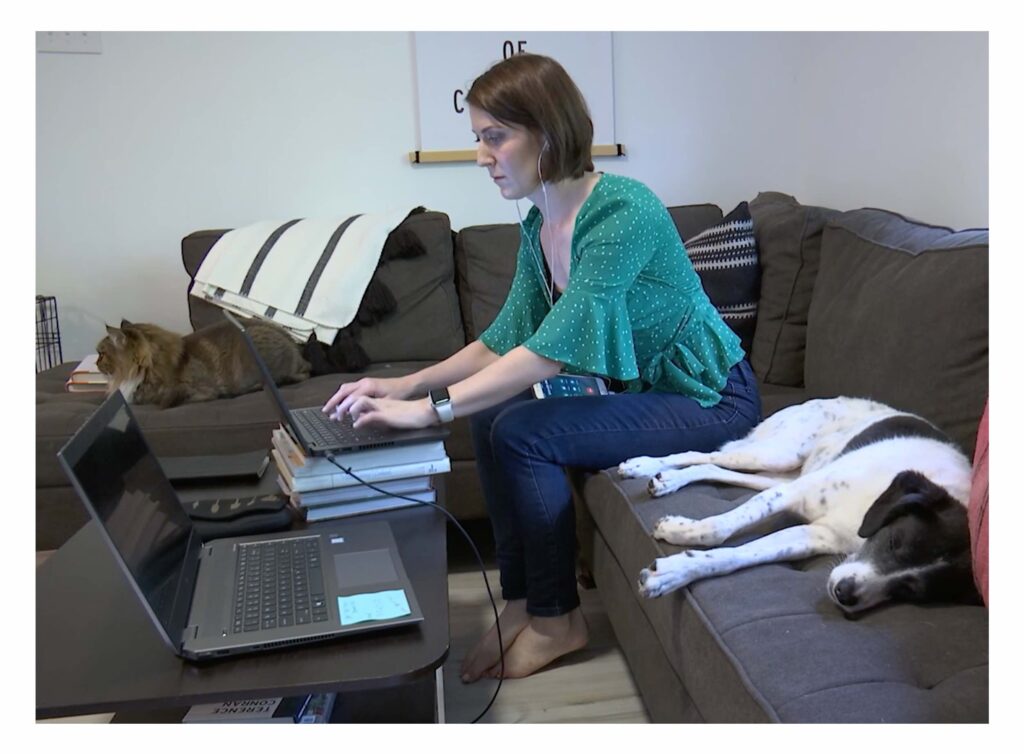
On a sunny day, I walked confidently into my first day at work for one of the bigger television stations in the US, feeling pretty good about my new reporting job. A photographer welcomed me and with a smirk and a smile, he said in a whisper, “Welcome to the lion’s den, kid. You’re fresh meat. Be careful.” It was his warning that I had to have my own back and being the new person didn’t mean I would get any breaks. That was the television world at that time. Get it done, get it done right or move aside. Your competition was everyone. My journey as a broadcast journalist was one that tested me in almost every possible way until I became an entrepreneur.
It was a real honor to share the tests of entrepreneurship with the Dell Women’s Entrepreneur Network (DWEN) Tech Talk in November. I love talking latakoo every chance I get. We’ve come quite a distance since my co-founder and I created latakoo in 2010. It’s always my hope that someone will hear something that speaks to them and it helps them in their journey and success.
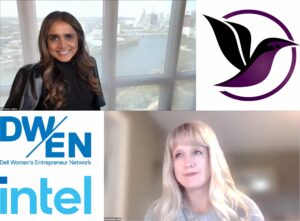
The DWEN talk, with Intel’s Global Sales Director Sarah Wieskus moderating, focused on the topic of How to Position Your Business for the Future. That’s something most entrepreneurs are thinking about. At latakoo, one of our goals is to build the future of content collaboration and sharing. Our video workflow company is always working to meet the ever-changing needs of the largest broadcasting companies in the world.
Please do watch our full Empower Hour chat here. A big thanks to Sarah, Intel and Dell!
If you can’t watch, I put together a list below from our chat of my tips for entrepreneurs and best practices that have helped me and our company grow. I certainly haven’t done it alone and I’m still learning. My co-founder Paul Adrian and I share these three qualities: We love to learn, we’re big on research and data, and we don’t like to quit.
I really do wake up every morning and think, “I can’t wait to go to work!” As a business owner, yes, I’m always working, but what I mean is I can’t wait to engage with my team, and I can’t wait to solve problems for my clients.
That doesn’t mean every day is full of roses. There have been many challenging times along the way. As I said during the talk, I knew starting a business wouldn’t be a cakewalk, but I didn’t know how hard it would be to build a company starting with an idea and taking it to profitability within 5 years. I hope these tips and lessons learned help you and your future. Best of luck!
MY BEST PRACTICES AND TIPS FOR ENTREPRENEURS
- Try to do something every single day that grows your business
- Listen intently to your clients’ needs, and work to come up with solutions
- My main ingredients to survival and success:
• Persistence
• Grit
• Not backing down
• Not letting go entirely, but enough so that others can do their jobs
• Taking a step every day toward a goal
• Tackle one problem one at a time, and don’t let them overwhelm you
• Having realistic expectations
- When should you ask for help?
• We bring in help for two reasons: When you or your team become inefficient, and tasks are taking too long, or when we need a specialist.
IF YOU’RE LOOKING TO START A BUSINESS
- It’s important to have an idea of how much bandwidth you have to contribute to it.
- If you can’t give it your full focus, it’s likely to be much tougher. Also, investors generally don’t invest in part-timers.
- When it comes to the financial investment, bootstrap for as long as you can.
- If you can, find a way to build your business, instead of spending all your time trying to raise investment.
- If you’re creating something that’s a solution for your clients, then focus on the clients and what they need.
- Success means having the freedom to create and make your own decisions. Don’t rely on others to make your decisions. Listen to everyone who gives you advice with a mind to evaluate the advice before acting on it.
- It’s important to have mentors you can go to for counsel who are always cheering you on, but also not afraid to be honest and give you a reality check.
- Make your decisions based on research and data first, but don’t ignore your gut feelings.
- If you’re an entrepreneur because you want to provide a solution and you are dedicated, then you’re going to figure it out.
I think about missed opportunities, often giving a good deal of thought to things I didn’t do well and how I could improve next time. At the DWEN talk, someone asked about books that helped me. I answered that I have a ton of books. Lots of Malcolm Gladwell. None of them were top of mind at the time so I spoke about finding people who are actually doing something and understanding their examples. I want to add to that here. I enjoy being a learner. I try not to make decisions without data and research. Reading and listening are obviously integral to learning. I don’t always want to read a book that’s self-help or business related because I need an escape. My current read is a psychological thriller. Having said that, my favorite read in 2021 was “Breath,” by James Nestor. A fellow female entrepreneur friend gifted it to me. James Nestor is again, someone who is out there doing what it takes to change his life and the lives of others. He did research on himself to cure his illness. In this book, he provides research and methods on the healing power of our breath. Whether we want to deal with stress or improve our performance, breathing the right way and focusing on the breath, makes a difference. Here’s more about Nestor’s mission and how it can help you deal with stress.
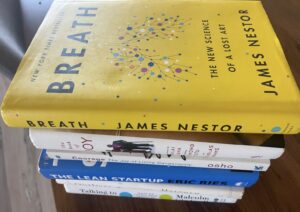
I also read lots of blogs on Medium, check the New York Times and Washington Post daily and I have several podcasts that I frequent on my runs, including The Rich Roll Podcast and Masters of Scale with Reid Hoffman. Roll is an ultra athlete and a vegan. I’m a runner and a vegan. Roll brings on guests who are inspirational in their quests in life, people who are trying to change the world, save the planet, help animals, live longer, live better. Rich Roll is one of the reasons I am a vegan. Reid Hoffman, the founder of LinkedIn, meanwhile focuses on how founders scaled their companies, telling the origin stories of companies that scaled successfully, with people sharing their challenges and lessons. One of the reasons I enjoy Masters of Scale is Hoffman’s genuine love for entrepreneurs and what they do. One of my favorite quotes about entrepreneurship comes from Hoffman, “An entrepreneur is someone who will jump off a cliff and assemble an airplane on the way down.”
Like a lot of entrepreneurs, I am definitely that kid who asked “why” a lot, defying some of the rules. Why does it have to be this way? Why can’t we do it better? Why is this the rule? Not every rule is right or efficient or good. Sometimes to change things, you have to step into the lion’s den and figure your way out.
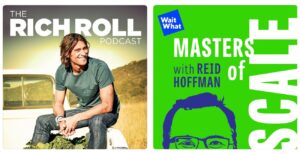
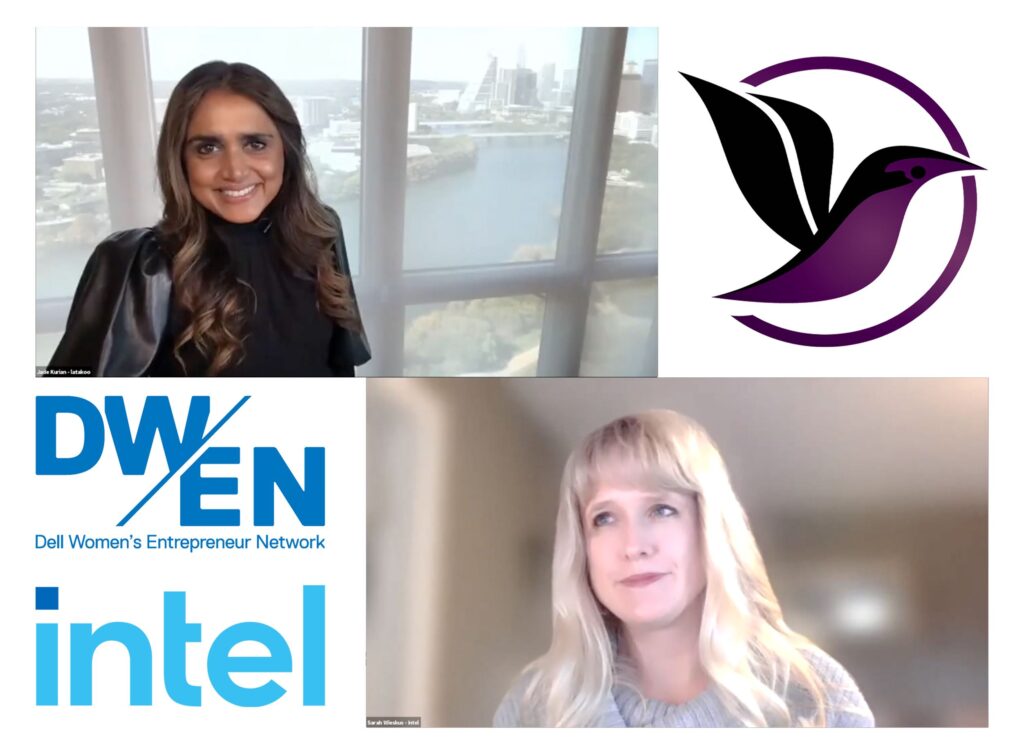
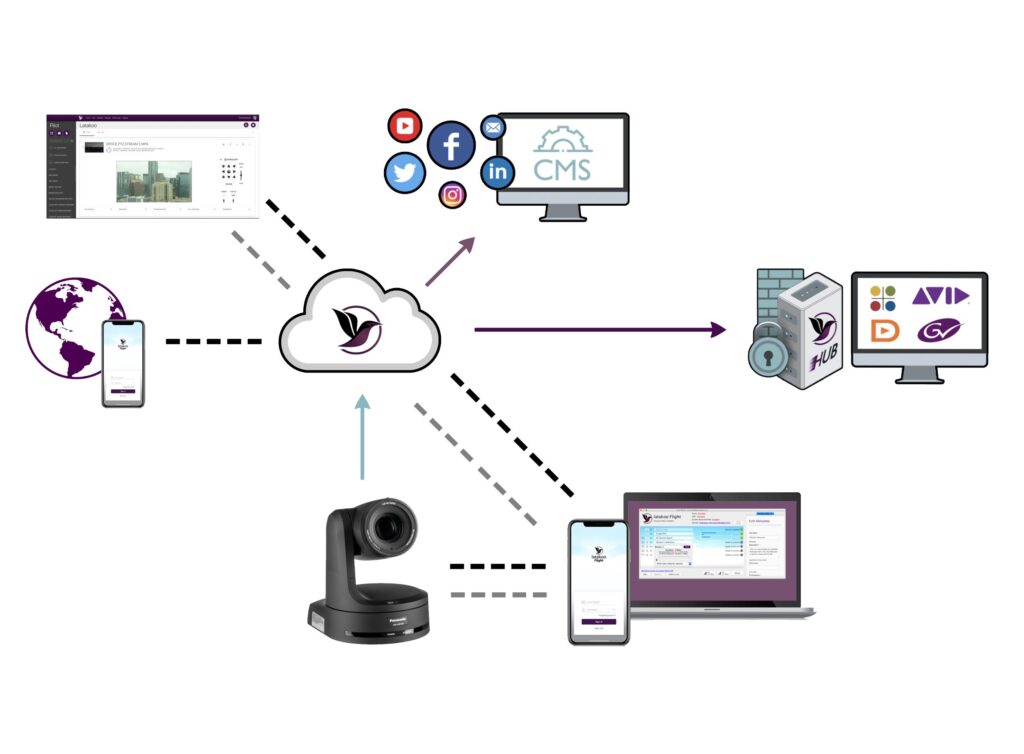
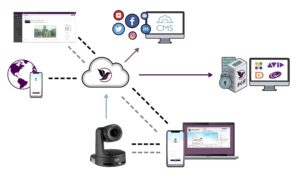 And when I say “we,” there are doubtlessly some tenured technology vendors who look at latakoo today and see an “interloper.” The reality is that whether we’re talking about new technology startups in a market or newly arrived immigrants to a country, the temptation once one has arrived and survived is to immediately turn around, close and bolt the door. Let’s build a wall, because we can clearly handle things from here. I can understand the trepidations here as I am both an immigrant and a startup technology founder, but we can’t let fear create handcuffs.
And when I say “we,” there are doubtlessly some tenured technology vendors who look at latakoo today and see an “interloper.” The reality is that whether we’re talking about new technology startups in a market or newly arrived immigrants to a country, the temptation once one has arrived and survived is to immediately turn around, close and bolt the door. Let’s build a wall, because we can clearly handle things from here. I can understand the trepidations here as I am both an immigrant and a startup technology founder, but we can’t let fear create handcuffs.
 “We had been using latakoo as a one-way street prior to the coronavirus pandemic, taking files from the field, to the cloud, to the asset manager,” said Rick Erbach, News Director of WGNO, in New Orleans, Louisiana during a webinar in April. “Now we’ve turned it into a two-way street. MMJs will say, ‘I need this video or that video.’ And so what we are doing now is putting that video up to the latakoo cloud so they can bring it down to their desktop at their home.” Erbach says latakoo has been a “newscast saver” during the pandemic.
“We had been using latakoo as a one-way street prior to the coronavirus pandemic, taking files from the field, to the cloud, to the asset manager,” said Rick Erbach, News Director of WGNO, in New Orleans, Louisiana during a webinar in April. “Now we’ve turned it into a two-way street. MMJs will say, ‘I need this video or that video.’ And so what we are doing now is putting that video up to the latakoo cloud so they can bring it down to their desktop at their home.” Erbach says latakoo has been a “newscast saver” during the pandemic.
